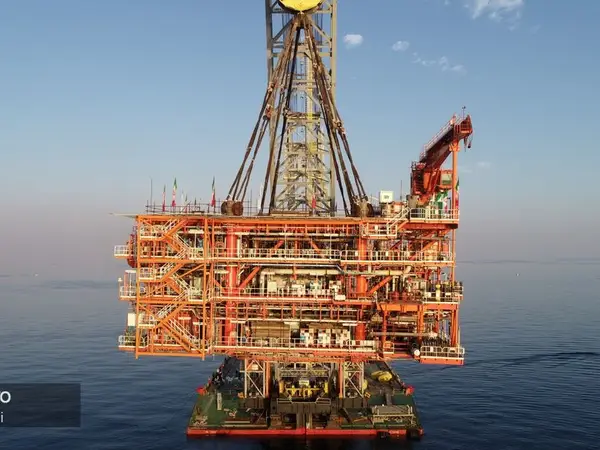A large fire sparked from an underwater pipeline has interrupted production at one of the platforms in Iran’s South Pars gas field in the Persian Gulf.
According to reports, the fire broke out Friday night in one of the transmission pipelines of phase 16 of the gas field, shutting down the platform.
Pars Oil and Gas Company said in a statement on Saturday that the production unit went out of operation although there was no fire on the platform itself and the accident had no human casualties.
It added that planning for repair work began as soon as the fire in the nearby pipeline was contained. Repairing such a pipeline may take several weeks.
The statement said lightning was the cause of the fire, noting that it ignited gas, which was leaking from the underwater pipeline. "The gas emitted to the water level was ignited by lightning 15 kilometers from the platform," the operating company stated.
An expert speaking to Iran International commented that the leak must have been a significant one to have caused a fire and the pipeline should be considered out of actions for a long time. Apparently, Iran used domestically produced pipes for laying the line in 2015, which would not meet industry standards, he said.
A source has told the semiofficial Mehr news agency that the 100-kilometer pipeline had many technical problems, and 70 kilometers of it had been replaced, but the remaining 30-kilometer segment was under repair. He added that the accident happened after 15 million cubic meters of methane-rich gas was injected into the pipeline.
After a video footage began circulating on social media, the state broadcaster moved to react and said the damage was not large.
The frequency of accidents in Iran’s energy facilities is increasing with some blaming lack of proper maintenance of the aging infrastructures and some suspecting sabotage by other countries, presumably Israel.
Production at the South Pars gas field has been dropping gradually in recent years as Iran is unable to make the necessary investments and improve its technology due to various sanctions. Last year, the field produced 70 percent of Iran’s daily 690 million cubic meters of natural gas output.
Meanwhile, with the world’s second largest gas reserves, Iran is unable to keep up with growing domestic demands, leading to frequent power cuts, although dirty fuels are substituted at power stations.
The incident must have reduced at least 15 million cubic meters of daily production, which can put further pressure on domestic gas supplies amid cold winter months.
Last winter, Iran experienced large power cuts in major cities. Protests broke out on a few occasions. When authorities started burning mazut, a dirty unrefined fuel to generate electricity, it led to heavy pollution in cities adding to the popular anger.
